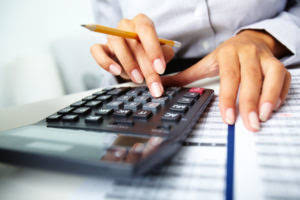To understand the differences between outstanding shares and float, we first need to understand the types of shares. The shares can be grouped according to the length of time that they were outstanding. In this case, group 1 consists of 100,000 shares that were outstanding for the entire year, while groups 2 and 3 are included in the 20,000 shares issued on 1 April. Consequently, the treatment of stock dividends and splits is different from the treatment used for issuances of shares in exchange for assets or services.
Basic EPS = Basic Weighted Average Shares
Authorized shares are the maximum number of shares a company can issue, as specified in its corporate charter. Outstanding shares are the shares that have been issued and are currently held by investors. Whether potential shares are considered anti-dilutive depends on the period. Company A might post a loss in the first quarter, and report a diluted share count of 100 million — but post a profit for the year, with a diluted share count more than twice as high. Options and warrants are one aspect of the difference between basic shares outstanding and diluted shares outstanding. Understanding how to calculate a weighted average can also be useful to individual investors who want to calculate their cost basis.
How Do Stock Buybacks Influence Shares Outstanding?
Among investors, it is most relevant to those who compile a position in a stock over a long period of time, buying on the dips and holding the shares. At the time, GE discussed plans to split into three companies and to divest from many businesses. They determined that reducing their share count from nearly 8.8 billion to roughly 1.1 billion better aligned with this vision (1).
Shares outstanding vs float
- To achieve a proper and fair view of the changes in the number of shares and for the calculation of EPS, the method of weighted average shares outstanding is used.
- Understanding how to calculate a weighted average can also be useful to individual investors who want to calculate their cost basis.
- This adjustment is made if the split or dividend occurs during the year or even after the year-end.
- Get instant access to video lessons taught by experienced investment bankers.
- Companies that have simple capital structures only need to report basic EPS.
- A company’s outstanding shares may change over time because of several reasons.
Market capitalization is calculated by multiplying the company’s share price by its shares outstanding. To achieve a proper and fair view of the changes in the number of shares and for the calculation of EPS, the method of weighted average shares outstanding is used. Simply using the number of shares outstanding at the end of the reporting period might give a distorted picture of the company.
Thanks to the SEC, common stock outstanding is straightforward to calculate
While the lower number of outstanding shares often hampers liquidity, it could also deter short sellers since it becomes more difficult to borrow shares for short sales. For blue chip stocks, multiple stock splits over decades contribute to market capitalization growth and investor portfolio expansion. However, simply increasing outstanding shares isn’t a guarantee of success; companies must consistently common shares outstanding formula deliver earnings growth to achieve sustained investor confidence. A company may authorize buying back some of its own shares in the market if they believe that the market is undervaluing them and there is enough cash on the balance sheet to do so. The number of shares outstanding can also be reduced via a reverse stock split. A number of company activities can change its number of shares outstanding.
- And when shares are bought back, investors end up owning more of the company.
- The number of outstanding shares changes periodically as the company issues new shares or repurchases existing shares, splits its stock or reverse-splits it.
- The outstanding number of shares may be either equal to or less than the number of authorized shares.
- Group 2 consists of the 8,000 shares outstanding from 1 April to the end of the year and group 3 is the 12,000 shares outstanding from 1 April to 31 August.
- Let’s assume the company also has $500 million in convertible debt with a conversion price of $5.
- Knowing a company’s number of shares outstanding is key when calculating critical financial metrics and determining share value as a portion of ownership.
Our Services
The outstanding number of shares may be either equal to or less than the number of authorized shares. For example, a company might authorize 10 million shares to be created for its IPO, but end up actually only issuing nine million of the shares. Here’s what you need to know about the different share counts that publicly traded companies use, as well as how you can calculate the number of outstanding common shares. Overall, the number of shares outstanding, the metrics you can calculate from it, and related metrics — like the float — provide key insights to investors.
This section provides the sum of the total authorized shares, the total number of shares outstanding, and the total floating shares. In addition to listing outstanding shares or capital stock on the company’s balance sheet, publicly traded companies are obligated to report the number issued along with their outstanding shares. These figures are generally packaged within the investor relations sections of their websites, or on local stock exchange websites. The weighted average shares outstanding, or the weighted average of outstanding shares, takes into consideration any changes in the number of outstanding shares over a specific reporting period. In effect, it weights any change in the number of shares outstanding according to the length of time that change was in effect.
- Explore how corporations authorize and calculate issued shares through market cap and balance sheet methods.
- They determined that reducing their share count from nearly 8.8 billion to roughly 1.1 billion better aligned with this vision (1).
- We Fools may not all hold the same opinions, but we all believe that considering a diverse range of insights makes us better investors.
- This shortcut is used to adjust the average outstanding shares for earlier years covered by comparative statements.
- Learn financial statement modeling, DCF, M&A, LBO, Comps and Excel shortcuts.
- Ask a question about your financial situation providing as much detail as possible.






